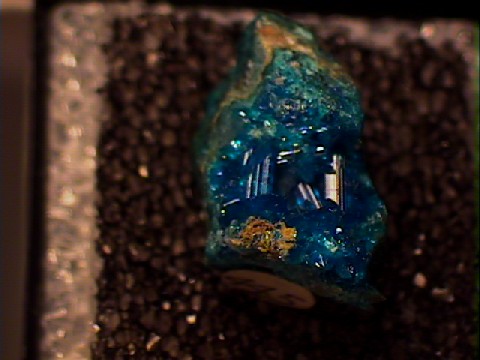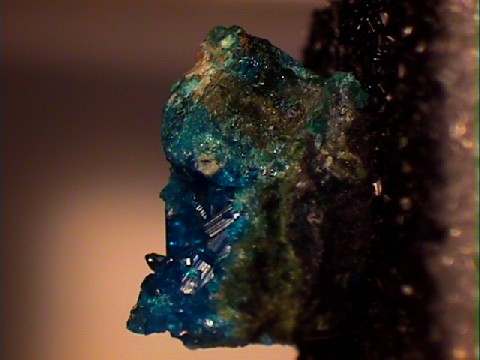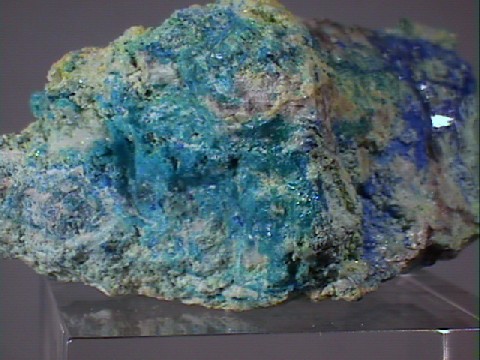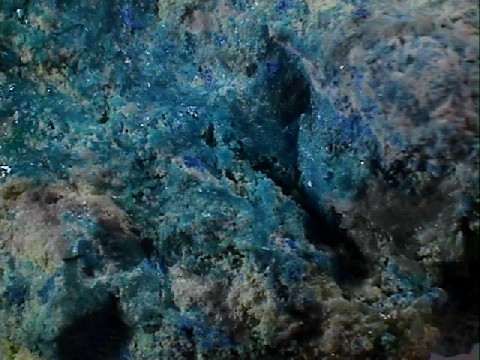 THE MINERAL CALEDONITE
THE MINERAL CALEDONITE
- Chemistry: Cu2Pb5CO3(SO 4)3(OH)6, Copper Lead Carbonate Sulfate Hydroxide.
- Class: Sulfates
- Uses: As a very minor ore of lead and copper and as mineral specimens.
Specimens
Caledonite is named for its country of original discovery . . . or at least that country's poetic name.
The country is Scotland.
Which is known in literature, especially poetry, as Caledonia, hence caledonite's name.
Caledonite was first discovered at Leadhills,
Caledonite forms small, but well formed and intricate crystals. It has a nice high luster, due to its lead content and a beautiful blue to green color due to its copper content. Caledonite is closely related to and often in association with linarite; CuPbSO4(OH)2. Linarite is normally a deeper blue and tabular or prismatic, but with a slanted, non-symmetrical termination. Caledonite and linarite are found in the oxidation zone of copper and lead ore deposits. Both minerals are beautiful and make for outstanding micromountable specimens.
PHYSICAL CHARACTERISTICS:
- Color is green, light blue, blue to blue-green.
- Luster is vitreous to resinous or greasy.
- Transparency: Specimens are transparent to translucent.
- Crystal System is orthorhombic; 2/m 2/m 2/m.
- Crystal Habits include small micromountable prismatic and less often, tabular crystals with a truncation formed by multiple parallel domal and pyramidal faces. Acicular interlocking and radial aggregates are typical. Individual crystals can display a wide range of crystal faces.
- Cleavage is perfect in one direction (basal) and poor in two (prismatic).
- Fracture is uneven.
- Hardness is 2.5 - 3.
- Specific Gravity is approximately 5.6 - 5.8 (very heavy for translucent minerals).
- Streak is greenish white to bluish-green.
- Other Characteristics: Crystals usually striated.
- Associated Minerals include leadhillite, cerussite, malachite, linarite, brochantite and anglesite.
- Notable Occurrences include the type locality of Leadhills,
Lanarkshire , Scotland as well as the fine specimens from the Mammoth-St Anthony Mine, Tiger, Arizona. Other locations include the Defense and Modoc mines and Cerro Gordo Mine, Inyo County and the Blue Bell Mine, San Bernardino, California; Beaver Creek, Utah and Dona Ana County, New Mexico, USA;Cornwall , England; Sardinia, Italy and Chile. - Best Field Indicators are crystal habit, density, color, streak, luster and cleavage.






